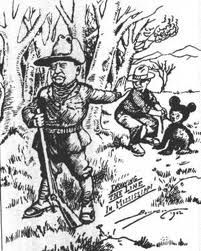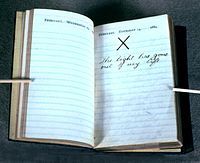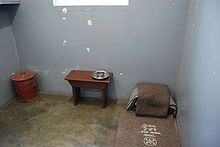Cross posted from The Stars Hollow Gazette
This is your morning Open Thread. Pour your favorite beverage and review the past and comment on the future.
Find the past “On This Day in History” here.
February 20 is the 51st day of the year in the Gregorian calendar. There are 314 days remaining until the end of the year (315 in leap years).
On this day in 1792, President George Washington signs legislation renewing the United States Post Office as a cabinet department led by the postmaster general, guaranteeing inexpensive delivery of all newspapers, stipulating the right to privacy and granting Congress the ability to expand postal service to new areas of the nation.
William Goddard, a Patriot printer frustrated that the royal postal service was unable to reliably deliver his Pennsylvania Chronicle to its readers or deliver critical news for the paper to Goddard, laid out a plan for the “Constitutional Post” before the Continental Congress on October 5, 1774. Congress waited to act on the plan until after the Battle of Lexington and Concord on April 19, 1775. Benjamin Franklin promoted Goddard’s plan and served as the first postmaster general under the Continental Congress beginning on July 26, 1775, nearly one year before the Congress declared independence from the British Crown. Franklin’s son-in-law, Richard Bache, took over the position on November 7, 1776, when Franklin became an American emissary to France.
Franklin had already made a significant contribution to the postal service in the colonies while serving as the postmaster of Philadelphia from 1737 and as joint postmaster general of the colonies from 1753 to 1774, when he was fired for opening and publishing Massachusetts Royal Governor Thomas Hutchinson‘s correspondence. While postmaster, Franklin streamlined postal delivery with properly surveyed and marked routes from Maine to Florida (the origins of Route 1), instituted overnight postal travel between the critical cities of New York and Philadelphia and created a standardized rate chart based upon weight and distance. [3]
Samuel Osgood held the postmaster general’s position in New York City from 1789, when the U.S. Constitution came into effect, until the government moved to Philadelphia in 1791. Timothy Pickering took over and, about a year later, the Postal Service Act gave his post greater legislative legitimacy and more effective organization. Pickering continued in the position until 1795, when he briefly served as secretary of war, before becoming the third U.S. secretary of state. The postmaster general’s position was considered a plum patronage post for political allies of the president until the Postal Service was transformed into a corporation run by a board of governors in 1971 following passage of the Postal Reorganization Act.

 On this day in 1942,
On this day in 1942,  On this day in 1885,
On this day in 1885,  On this day in 2006, the last
On this day in 2006, the last  Worldwide, the last MASH unit was deactivated on October 16, 2006. The
Worldwide, the last MASH unit was deactivated on October 16, 2006. The 

 On this day in 1633, Italian philosopher, astronomer and mathematician
On this day in 1633, Italian philosopher, astronomer and mathematician  On this day in 1990,
On this day in 1990,  Mandela was imprisoned on
Mandela was imprisoned on